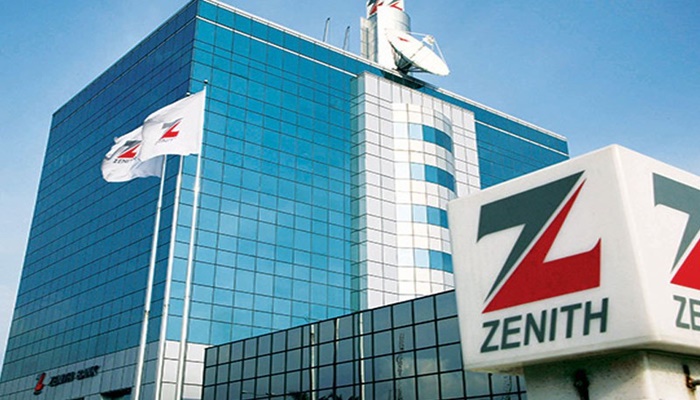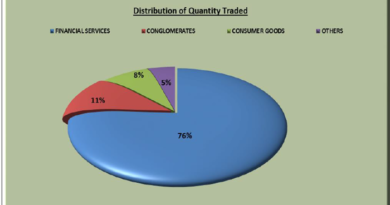Nigerian banks lead African peers on ROE, lag in valuations
Despite having lower valuations compared to its peers in South Africa and Kenya, Nigerian banks performed better in terms of profitability and efficiency in making use of their operating funds in 2017.
Research by BusinessDay on the best five performing banks in Nigeria, South Africa and Kenya showed Nigerians banks such as Guaranty Trust bank and Stanbic bank led African peers in terms of Return on Equity (ROE) which measures bank’s profitability by revealing how much profit a bank generates with the money shareholders have invested.
In full year 2017, Guaranty Trust bank with a market cap of N1.1 trillion ($3 billion) had the highest ROE of 30.17 percent compared to 28.8 percent recorded in 2016.
“GT Bank has had great success in Nigeria’s affluent segment, based on high service levels. It has been rated best in class in terms of CSAT, a measure of client experience,” Mckinsey Global consulting firm said in its 2018 report.
Mckinsey said African customers have a strong need for affordable financial solutions, which points directly to the second winning practice in African retail banking: targeting the right segments with compelling offers of which Nigeria GT Bank is a good example.
Nigeria’s Stanbic Bank (market cap of N463.2 billion or $1.28 billion) was second, reporting a strong ROE of 29.6 percent in 2017 while South Africa’s leading Capitec Bank, with a market cap of $8 Billion had the third best ROE of 27 percent in 2017.
Also, Nigeria’s Zenith Bank (market cap of N800.6 billion or $2.2 billion) had the fourth best ROE of 23.3 percent in 2017 followed closely by First Rand of South Africa (market cap of $27 billion), with ROE of 22.5 percent.
Kenya’s Equity Group Holdings (market cap of $1.78billion), came in next with ROE at 21.6 percent in 2017. “The main driver for the Nigerian banks last year was the yields and government securities which were up 18 to 20 percent,” Tajudeen Ibrahim, Head of Research at Chapel Hill Denham Securities said.
Another foremost bank in south Africa, Barclays Bank of Africa (market cap $11 billion) had ROE of 20.1 percent in full year of 2017, while Kenya Commercial Bank (market cap $1.38billion) had ROE of 19.5 percent in 2017.
South Africa’s NED bank (market cap $10.82 billion) and Standard Bank Group (market cap $26.5 billion) had ROEs of 18.1 percent and 17 percent in 2017 respectively.
Co-operative Bank of Kenya with a market capitalisation of $976.4million reported ROE of 17 percent in 2017 while Nigeria’s UBA with a market cap of N369.3 billion or $1 billion had an ROE of 16.78 percent in 2017.
Barclays Bank of Kenya Limited (market cap of $639.2million) had ROE of 16.02 percent in 2017; Kenya’s Diamond Trust Bank with a market cap of $523.09million recorded an ROE of 14.2 percent in 2017. Nigeria’s Access bank (market cap of N300 .8 billion or $830 million) had ROE of 12.7 percent in 2017 while South Africa’s Absa bank with a market cap of $27 billion had an ROE of 11.8 percent in full year of 2017.
While the Nigerian Banks led on returns they still largely lacked their African peers in terms of valuations of their stock by investors.
The five Nigerian Banks researched had an average Price to Book ratio of 1.378x, compared to the 5 South African lenders which had an average P/B ratio of 2.64x, and Kenyan lenders with P/B ratio of 1.607x.
The price-to-book ratio (P/B Ratio) is a ratio used to compare a stock’s market value to its book value. A lower P/B ratio indicates that the stock is undervalued.
Wale Okunriboye, Head, Investment Research at Sigma Pensions said though some Nigerian banks might report a higher ROE than South African and other peers, one needs to normalize this number for the environment using cost of equity which tends to be driven largely by the risk free rate.
“From this perspective, investors would seek to reward banks with high excess return, that is the spread of return on equity over cost of equity in their markets with a richer price to book valuation,” Okunriboye said.
GT Bank, the bank with the highest ROE in 2017 had a 1 year return of 22.8 percent and trades at 2 times price to book ratio, while the second highest in terms of ROE, Stanbic Bank, had a 1 year return of 78 percent and trades at a 2.5 times price to book ratio.
Also, Zenith bank had a 1 year return of 43.9 percent while its price to book ratio was 1 times, however UBA had a 51 percent 1 year return and a trades at 0.7 times book value, while Access Bank trades at a Price to Book ratio of 0.69x.
In South Africa, Captec bank had a 1 year return of 18 percent while price to book ratio was 5.5 times; Barclays Africa Group had a 1 year return of 24.6 percent while its price to book ratio of was 1.2 times.
NED Bank had a 1 year return of 35.3 percent and price to book ratio of 1.5 times, First Rand Bank trades at a price to book ratio of 3x, and is up 32 percent in the past year, while Standard Bank Group had a 1 year return of 54 percent and price to book ratio of 2 times.
Kenya Commercial bank with a one year stock return of 14.29 percent had a price to book ratio of 1.37 times.
Meanwhile Barclays Bank of Kenya and Equity Group Holding Bank recorded one year returns of 31.1 percent and 22.73 percent while trading at price to book ratios of 1.49 times and 2.08 times respectively. Co-operative Bank of Kenya trades at a price to book ratio of 1.49 percent and its stock has returned 17 percent in the past year.
Okunrinboye added given the high interest rate environment in Nigeria, Nigerian banks would need to dig deeper than South African peers to command rich P/B multiples which only two banks (GT Bank and Stanbic IBTC) seem to currently be able to do consistently. “Perhaps you can blame this P/B discount on the environment which is what market pricing seems to also suggest but there is no getting away from it,” Okunrinboye said by mail.
Leading financial institutions have upgraded Kenya’s growth prospects for this year, citing a return to political stability after political uncertainties following a bruising presidential contest that put hold on many investment decisions. Also, due to improved rain, agricultural outputs have improved after the biting drought in the first half of 2017 which hit farming activities hardest.
The confidence of investors in the economy is also reflected in increased diaspora remittances that hit $210.36 million in first two months of the year and foreign inflows into the Nairobi bourse.
Global consulting firm, Mckinsey, stated this in its 2018 report that Nigeria and other African countries provide a refreshing contrast as their markets were fast-growing and nearly twice as profitable as the global average.
“African customers have a strong need for affordable financial solutions, which points directly to the second winning practice in African retail banking: targeting the right segments with compelling offers of which Nigeria GT Bank is a good example,” Mckinsey said.
The New York based consulting firm said although competition is heightening and regulation is tightening, there is still much room to grow as Africa’s retail banking penetration stands at just 38 per cent of GDP, half the global average for emerging markets.
Mckinsey cautions that Africa’s fast-growing, profitable banking markets, global media reports, are more likely to highlight Africa’s social and political problems than its rise as a business market.
In terms of what will drive performance of the Nigerian banks in 2018,Tajudeen Ibrahim of Chapel hill Denham forecasts that corporate earnings and operational efficiency which implies those with low cost to income ratio and those with non-income interest and fixed commission are going to earn the most in 2018.
BusinessDay researched the five largest banks in Nigeria, South Africa and Kenya; in Nigeria the banks were Guaranty trust Bank, Stanbic Bank, Zenith Bank, United Bank for Africa (UBA) and Access Bank while in South Africa, the banks were Capitec Bank, Standard Bank, First Rand, NED Bank and Barclays Africa Group.
In Kenya the banks were; Kenya commercial bank, Co-operative Bank of Kenya, Barclays Bank of Kenya and Equity Group Holding Bank.
Credit: Businessday.




